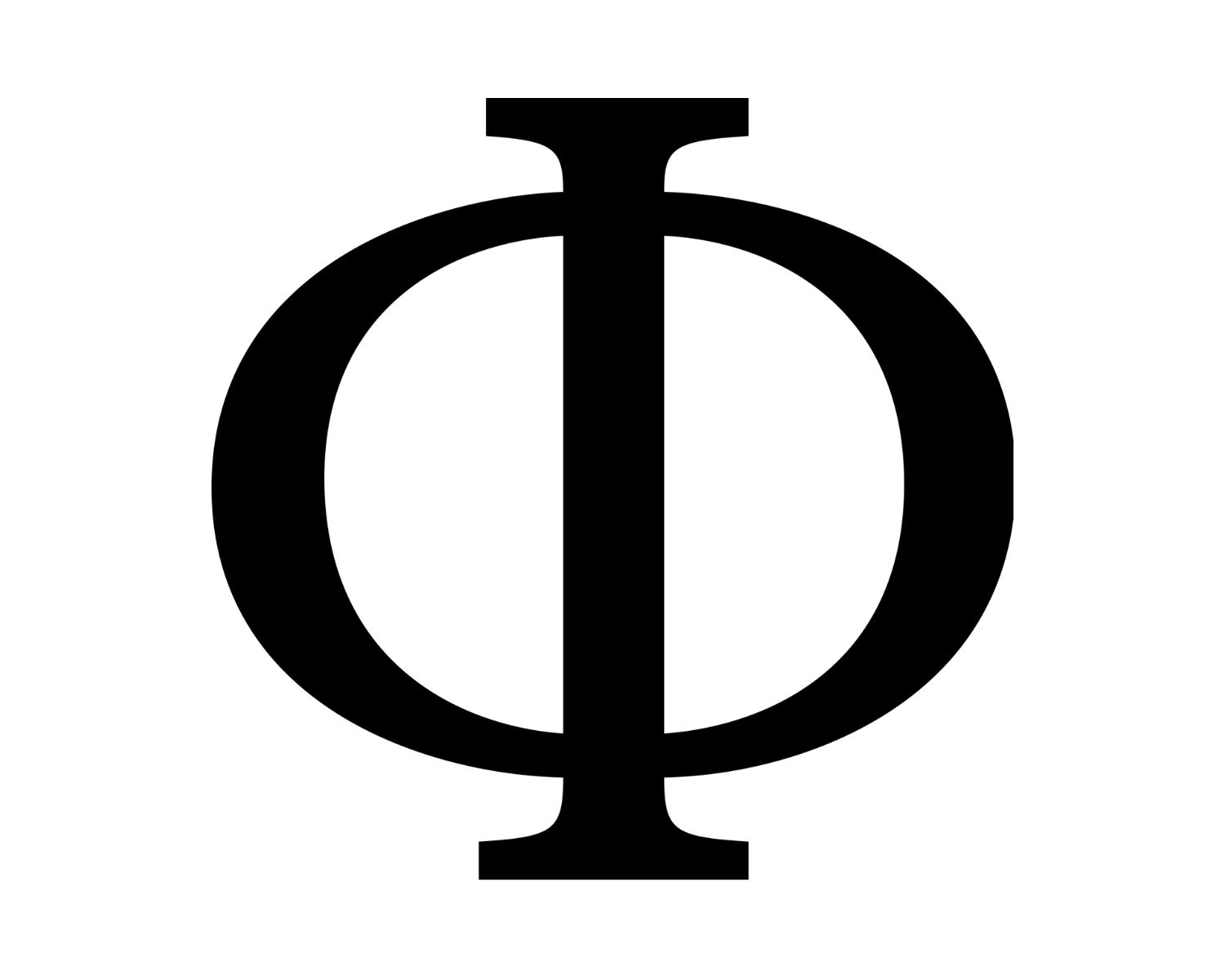
Phi, also known as the Golden Ratio or the Divine Proportion, is a fascinating mathematical concept that has captured the attention of artists, architects, and mathematicians for centuries. This elusive number, approximately equal to 1.6180339887, is found in various aspects of nature, art, and design, serving as a universal aesthetic principle.
From the ancient Greeks to modern-day enthusiasts, Phi has been the subject of study and admiration. It has influenced the composition of iconic works of art, the design of renowned landmarks, and even the proportions of the human body. Understanding the significance and applications of Phi can provide insights into the harmony and balance found in the world around us.
In this article, we will explore 11 intriguing facts about Phi that shed light on its historical significance, mathematical properties, and real-world applications. So, grab your geometric tools and get ready to dive into the mesmerizing world of Phi!
Key Takeaways:
- Phi, a special number derived from the Fibonacci sequence, appears in nature, art, and even the human body. It’s like a secret code that makes things beautiful and balanced!
- From architecture to the stock market, Phi’s influence is everywhere. It’s like a hidden pattern that connects math, art, and even our perception of beauty.
Phi is a mathematical constant.
Phi, often represented by the Greek letter ?, is a mathematical constant that is approximately equal to 1.It is an irrational number, meaning it cannot be expressed as a simple fraction, and its decimal representation goes on infinitely without repeating. Phi holds a unique significance in various fields, particularly in mathematics, art, and nature.
Phi is derived from the Fibonacci sequence.
Phi is derived from the Fibonacci sequence, a series of numbers where each number is the sum of the two preceding ones: 0, 1, 1, 2, 3, 5, 8, 13, 21, and so on. As the sequence progresses, the ratio between successive terms converges to Phi. This relationship is known as the “golden ratio” and is often found in nature’s patterns and structures.
Phi is found in architectural design.
The golden ratio, derived from Phi, has been used in architecture for centuries. It is believed to create aesthetically pleasing and harmonious designs. Famous structures such as the Parthenon in Athens and the Great Pyramids of Egypt are said to incorporate the golden ratio in their proportions.
Phi appears in art and design.
Artists and designers often utilize the golden ratio to create visually appealing compositions. Paintings, sculptures, and even product designs may incorporate the golden ratio to achieve balance and harmony. The use of Phi in art can be traced back to ancient Greek culture.
Phi is prevalent in nature.
The golden ratio can be observed in various natural phenomena. From the spiral patterns of seashells to the branching of trees, many elements in nature exhibit ratios close to Phi. This occurrence suggests a certain inherent beauty and balance in the natural world.
Phi is present in human anatomy.
The human body also exhibits instances of the golden ratio. Proportions such as the ratio between the length of the forearm and the hand, or the ratio between the height of the navel to the top of the head, often approximate Phi. Some argue that this alignment enhances perceived attractiveness.
Phi has connections to the stock market.
The golden ratio has been observed in financial markets, with some traders using it to predict potential levels of support and resistance. Certain Fibonacci retracement levels, which are derived from Phi, are believed to indicate key price levels that may influence market behavior.
Phi is used in music and composition.
Musicians and composers have incorporated the golden ratio into their works. The relationship of Phi is believed to create harmonious melodies and pleasing compositions. Some musical instruments, such as the violin, are designed with proportions based on the golden ratio.
Phi is connected to the beauty industry.
In the beauty industry, the golden ratio is often associated with facial proportions and symmetry. Some argue that faces that adhere to the golden ratio are perceived as more attractive. This concept has influenced facial reconstruction surgery and cosmetic procedures.
Phi has inspired philosophical and spiritual interpretations.
The golden ratio has intrigued thinkers and philosophers for centuries. It has been associated with concepts such as divine proportion, beauty, and the balance between order and chaos. Some believe that the presence of Phi in the universe points to underlying mathematical principles.
Phi continues to be studied and explored.
Phi remains a topic of interest and research in various fields. Mathematicians, scientists, artists, and philosophers continue to explore the significance and applications of Phi. Its unique properties and universal presence make it a captivating subject of study.
Conclusion
Phi, also known as the Golden Ratio or Divine Proportion, is a fascinating mathematical concept that has intrigued scholars, artists, and architects for centuries. It appears in nature, art, and even in the human body, creating a sense of balance and harmony. The 11 facts about Phi that we’ve explored shed light on its significance and influence in various fields.Understanding Phi can enhance our appreciation for the beauty and order that exist in the world around us. From the mesmerizing spiral of a seashell to the delicate symmetry of a flower, Phi is a guiding principle that underlies it all.By incorporating Phi into design, architecture, and art, creators can tap into a universal aesthetic appeal that resonates with people on a subconscious level. It is this inherent connection to Phi that evokes a sense of balance, elegance, and timeless beauty.Whether you’re a mathematician, artist, or just someone who appreciates the wonders of the world, Phi is a concept worth exploring. Its ubiquity is a testament to the interplay between mathematics and nature, reminding us of the intricate patterns and hidden harmonies that surround us every day.
FAQs
Q: What is Phi?
A: Phi, also known as the Golden Ratio or Divine Proportion, is a mathematical concept representing a ratio of approximately 1.6180339887. It is believed to create a sense of aesthetic appeal and harmony.
Q: Where can Phi be found in nature?
A: Phi can be found in various natural phenomena, such as the spiral pattern of seashells, the branching of tree limbs, the arrangement of leaves on a stem, and even the proportions of the human body.
Q: How is Phi used in art and design?
A: Artists and designers often incorporate Phi into their work to create a balanced and visually appealing composition. It can be seen in the proportions of famous artworks, architecture, and even in logo design.
Q: Is Phi related to the Fibonacci sequence?
A: Yes, Phi is closely related to the Fibonacci sequence, where each number is the sum of the two preceding numbers. As the numbers in the sequence increase, the ratio between them converges towards Phi.
Q: Can Phi be calculated?
A: Yes, Phi can be calculated using various mathematical methods, such as the quadratic equation or continued fractions. However, due to its irrationality, Phi cannot be expressed as an exact decimal or fraction.
Q: Why is Phi considered aesthetically pleasing?
A: Phi is believed to elicit a subconscious sense of harmony and balance in humans. Its prevalence in nature and its relationship to the human body suggest an innate connection that resonates with our perception of beauty.
Q: Are there any practical applications of Phi?
A: Although Phi is often associated with aesthetics and design, it has also found applications in fields such as architecture, urban planning, music, and even stock market analysis.
Q: Is Phi the only ratio that creates aesthetic appeal?
A: No, there are other ratios and principles, such as the rule of thirds or the golden rectangle, that also contribute to aesthetic appeal in various contexts. However, Phi has a unique status due to its widespread occurrence in nature and art.
Q: Can Phi be found in 3D objects?
A: Yes, Phi can be found in three-dimensional objects as well. It can be observed in the proportions of architectural structures, sculptures, and even in the growth patterns of certain plants and organisms.
Q: Can Phi be considered a universal principle?
A: Phi is perceived as a universal principle due to its presence across cultures and time periods. It transcends language and cultural barriers and remains a symbol of beauty and harmony.
Q: Is Phi a purely subjective concept?
A: While beauty and aesthetics can be subjective to some extent, Phi has objective properties that make it a compelling mathematical concept. Its prevalence in nature and its impact on human perception suggest an inherent connection beyond individual preferences.
Phi's mathematical allure extends far beyond equations. Nature's beauty shines through phi's presence in Phi Phi Islands' stunning landscapes. Omega Psi Phi fraternity brothers embrace phi's significance in their guiding principles. Zeta Phi Beta sorority sisters find empowerment and unity in phi's influence on their organization. Explore phi's captivating connections to these seemingly unrelated topics for a deeper appreciation of this golden ratio's pervasive impact.
Was this page helpful?
Our commitment to delivering trustworthy and engaging content is at the heart of what we do. Each fact on our site is contributed by real users like you, bringing a wealth of diverse insights and information. To ensure the highest standards of accuracy and reliability, our dedicated editors meticulously review each submission. This process guarantees that the facts we share are not only fascinating but also credible. Trust in our commitment to quality and authenticity as you explore and learn with us.


